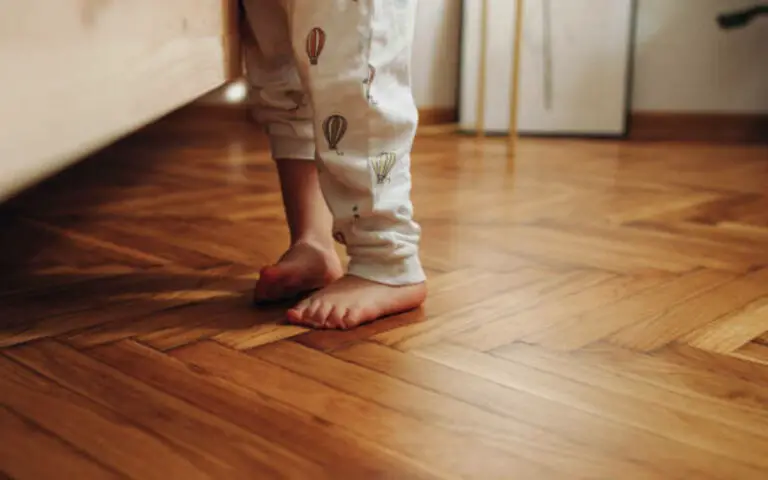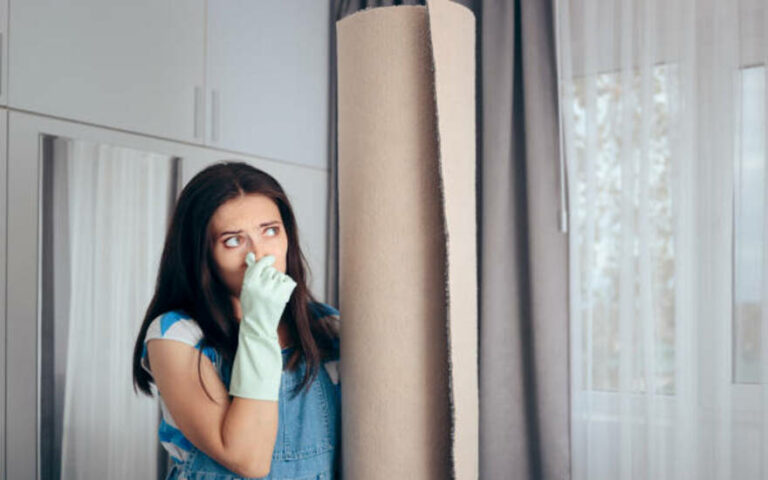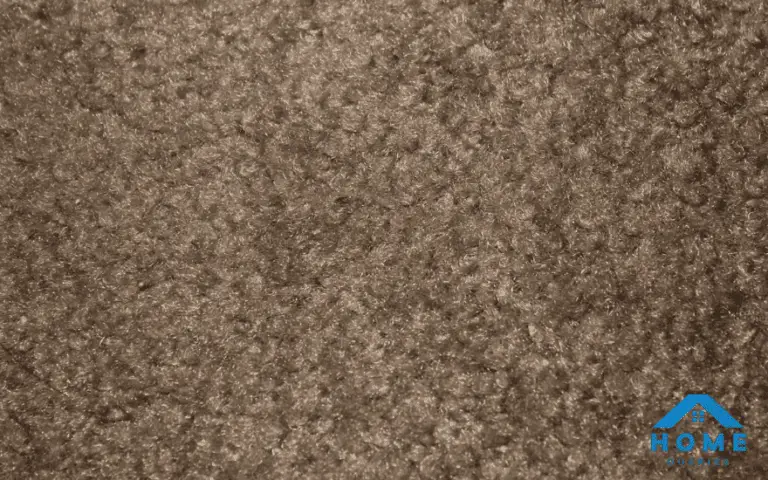I’ll discuss how to identify if mold is present, how to test for it safely, and what to do if your suspicions are confirmed.

How to Spot Mold Growth on Carpet?
When spotting mold growth on a carpet, there are a few key signs to look out for. Firstly, look for circular patterns of brown, green, or black stains on the mat.
These stains typically indicate the presence of mold or mildew, warns Bob Vila. Secondly, watch for a musty smell – a sign of mold or mildew in the carpet.
Lastly, you can use a mold testing kit to check the airflow in your carpet and identify any mold present.
If you notice any of these signs, it’s essential to act quickly to prevent further growth or spread of the mold.
Is Mold Visible On Carpet?
Yes, mold is visible on carpets and can appear in green, white, or black spots. Mold is often difficult to detect since it can grow in damp, dark places like under the carpet and behind walls. If you think you see mold on your carpet, it’s essential to act quickly.
It would be best if you also looked for circular patterns of brown, green, or black stains, indicating that mold has been growing for a while.
Additionally, if you smell a musty odor near your carpeting, this could be a sign that mold is present. It’s essential to identify the source of the mold and take steps to remove it so that it doesn’t cause health problems for you and your family.
What Does Mold Look Like on Carpet?
Mold can be difficult to spot on the carpet, but looking out for the signs is essential. If you suspect there may be mold, look for circular patterns of brown, green, or black stains. These stains typically indicate the presence of mold or mildew. Additionally, if there is a musty odor within the vicinity of your carpet, this is a definite indication that mold is present.
You can check under your carpet for discolored patches or wet spots – these are tell-tale signs of mold growth. If you do find mold, it’s essential to take the necessary steps to remove it from your home – such as vacuuming up any surface mold and applying a mold-killing solution to the affected area.
Signs of Mold on Carpet
One of the most common signs of mold on the carpet is discoloration. If the decay advances, you may notice circular patterns of brown, green, or black stains on the mat. In addition to discoloration, you may also see a musty odor near your carpet, another indication of mold growth.
If you suspect mold on your carpet, taking preventative measures is essential. Vacuuming the affected area to remove any surface mold and applying a mold-killing solution can help control the problem. If the damage is more significant, you may need to replace the carpet.
What Does Mold Smell Like On Carpet?
Mold has a distinct musty or sour smell that can be easily detected. If you notice a musty odor near your carpet, it’s a sign that mold is growing beneath it. This is because mold produces a pungent odor during its growing stages.
To detect the presence of mold, you can use a mold testing kit to test the airflow in your carpet. Additionally, if there is any water-damaged or wet carpet, this is also an indicator of potential mold growth. It is essential to identify the source of the mold and take appropriate action to ensure that it is adequately eliminated.
What Are the Possible Health Effects of Mold?
Mold can cause various health effects, depending on the type of mold and how much you’re exposed to. Some people are more prone to health effects from mold than others, such as those with allergies or asthma.
Common mold-related health problems include respiratory problems, skin irritation, eye irritation, and headaches. Sometimes, mold exposure can lead to more severe issues like chronic fatigue and depression. If you’re experiencing any of these symptoms, testing for and eliminating mold growth in your home or workplace is essential.
How to Prevent Mold Growth on Carpet?
Preventing mold growth on the carpet is essential to keeping your home healthy. The key is to identify and address any potential sources of moisture, such as leaky pipes or drainage systems. You should also regularly check for signs of mold, such as discoloration or a musty smell.
Regularly vacuuming and cleaning your carpets can also help prevent mold growth. Additionally, using a dehumidifier to reduce moisture levels in the air can help keep carpets dry and free from mold.
If you have found evidence of mold on your carpet, you should act quickly to remove it. Follow the steps outlined above to identify the source of the mold and vacuum the affected area, then apply a mold-killing solution and allow it to dry completely before replacing the carpet if necessary.
How to Get Rid Of Mold On Carpet?
Removing mold on your carpet is essential to keeping your home healthy and safe. The first thing you need to do is identify the source of the mold. This could be a leaky pipe, a plumbing issue, or another problem.
Once you’ve identified the source, vacuum the affected area to remove surface mold. Then, apply a mold-killing solution to the affected area and let it dry completely. If the damage is too extensive, you may need to replace the carpet entirely.
Be sure to take all the necessary precautions when dealing with mold, as inhaling or touching mold or mold spores can cause allergic reactions in some people. Taking proactive steps like these can help protect your family and home from potentially serious health risks associated with mold growth in carpets.
#1 Identify the source of the mold
If you suspect mold is growing under your carpet, it’s essential to identify the source of the mold before taking any action. Mold can grow in damp and humid areas, so checking for water damage or high moisture levels is essential. Look for signs of water damage around windows, pipes, and other sites prone to leaking.
If you notice any discoloration or dampness in the carpet, this may indicate a mold problem. You should also check behind furniture and other items trapping moisture and preventing air circulation. Once you have identified the source of the mold, you can move on to the next steps for getting rid of it.
#2 Vacuum the affected area to remove surface mold
Vacuuming the affected area of your carpet is an essential step in removing any surface mold. Doing so will ensure that all mold spores are released and do not spread further into your home.
Be sure to use a vacuum with a high-efficiency particulate air (HEPA) filter, as this will help remove all mold spores. Vacuuming regularly will also help prevent mold growth on your carpet.
#3 Apply a mold-killing solution to the affected area
Once you’ve identified the source of the mold, it’s time to apply a mold-killing solution. You can purchase an antifungal cleaner from your local store and use it according to the package instructions.
Alternatively, mix a solution of equal parts white vinegar and water in a spray bottle and spray it directly onto the affected area. The vinegar is just acidic enough to kill mold spores and smaller colonies, so wear protective clothing and a face mask when applying the solution. Allow it to dry completely before proceeding with further steps.
#4 Allow the solution to dry completely
Once you’ve applied a mold-killing solution to the affected area, it’s essential to ensure it dries completely. This is the key to preventing mold growth. If the site is still damp, the mold spores will be able to spread, and you may find yourself back in the same situation again.
Ensure you give the carpet enough time to dry before moving furniture back in or reusing the room. It’s also essential to identify and remove the source of moisture that caused mold growth in the first place. Otherwise, you might find yourself dealing with this problem all over again.
#5 Replace the carpet if necessary
If you have identified the source of the mold and have already vacuumed the affected area, and applied the mold-killing solution, you may need to replace your carpet. Sometimes, the mold may be too deeply embedded into the carpet’s fibers, making it impossible to obliterate.
Replacing your carpet will help ensure that no other health risks arise from the mold, and it is always a good idea to take this precaution if you are dealing with a severe infestation.
What To Do If You Find Mold Under Your Carpet
If you have found mold under your carpet, the first step is to identify the source of the mold. This can be done by checking any nearby plumbing fixtures, air conditioning units, and other possible sources of water or moisture. Once you have identified the start, you should address it.
Next, vacuum the affected area of your carpet to remove as much surface mold as possible. Afterward, apply a mold-killing solution to the affected area and allow it to dry completely. If the mold has spread throughout your carpet and cannot be removed, you may need to replace it entirely.
If you find mold under your carpet, taking action quickly and thoroughly is essential. By identifying the mold’s source and then removing it from your rug, you can help protect yourself from potential health hazards and keep your home safe from future mold growth.
Summary
To sum up, it is essential to understand the dangers of mold growth on carpets. If you suspect that your carpet may have been affected by mold, there are a few steps you can take to identify and address the issue. First, use a mold testing kit to test the air quality in your home.
If the test reveals the presence of mold, then you should take steps to remove it. This can involve vacuuming the affected area, applying a mold-killing solution, and possibly even replacing the carpet if necessary. Finally, it is essential to identify and address the source of the moisture that caused mold growth to prevent future issues.






